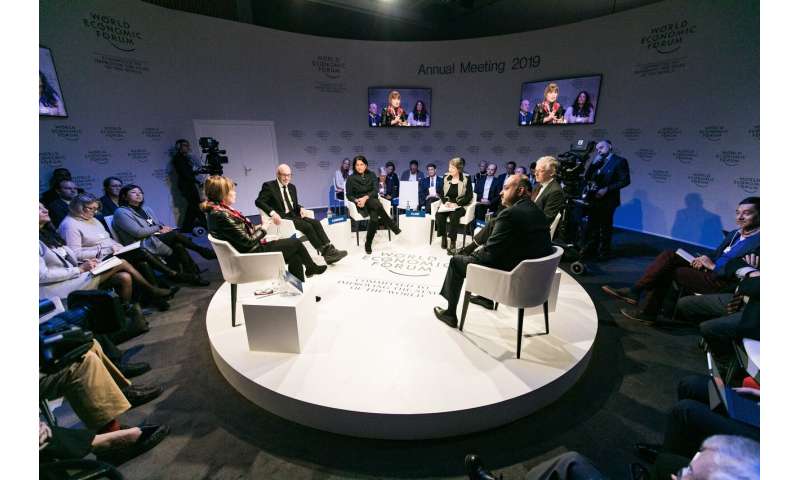Improving communication about Future and Emerging Technologies

A two-day virtual workshop brought together innovators with experts from policy and media to discuss effective communication of high-risk research and innovation to diverse stakeholder groups
Despite their potential impact and fascination, FET innovation is hard to follow. Three expert panels addressed this at a 2-day workshop entitled: Signals from the Future: Emerging Technologies in Science Journalism. Organised by FETFX and QUEST in November, it focused on FET communication challenges and included a preview of QUEST's new AI software for scientific journalists.
Watch all the sessions in our playlist
The first panel, moderated by European Research Council former president Helga Nowotny, explored FET science communication gaps, pathways to innovation, and the importance of the European Innovation Council (EIC).
EIC Programme Manager for Health & Biotechnology Iordanis Arzimanoglou explained that while the best way to communicate about the Enhanced EIC pilot phase is by sharing strategy plans, the focus must shift to impacts and actions. He stressed the EIC's ability to gather disparate stakeholder groups and identify new synergies. The second speaker, PREFET coordinator Eva García Muntíon emphasized the need to talk and listen to stakeholders constantly. She stated that different stakeholder groups have their own languages and visions for the same issues—and that a common understanding needs to be forged. Istituto Italiano di Tecnologia's Valeria delle Cave next talked about how communication helps solve tensions between FET research's typical long-term view of the future and impatient politicians and the general public who want to see immediate impacts. Finally, science journalist István Palugyai discussed fake news, anti-science voices and the threat of losing an independent approach in science communications. He suggested ways for the European Commission to support science journalism, including help for journalists in accessing sources of information and science journalism training.
"There is so much great work being done in Europe, but it needs to be communicated and built upon," summarised Nowotny.
The second panel, led by QUEST's Alessandra Fornetti, explored new approaches for communicating from diverse perspectives: INSCICO's Alexander Gerber provided a social science view on FET communication, outlining a framework to measure outreach. Then Carl-Gustav Linden from the universities of Bergen and Helsinki spoke about the harmfulness of the "robot journalism" metaphor and AI in journalism. Artist Anna Dumitriu next talked about how data incorporated into artwork can allow people to interact emotionally with research. To conclude, Daniela Ovadia from the Center for Ethics in Science and Journalism explained how journalists can use the Anticipatory Technology Ethics method for assessing FETs, and the role of science journalism in ethics.
Panel three, moderated by FETFX partner eutema's Erich Prem, focused on Artificial Intelligence (AI) as a FET which has captured the global imagination. Panellists ICREA Research Professor Luke Steels, University of Trento Computer Science Professor Fausto Giunchiglia, Head of the Jozef Stefan Institute Artificial Intelligence Laboratory Dunja Mladenić, and journalist, editor and presenter of the RTV Slovenia show 'Let's Bite into Science' Renata Dacinger discussed how AI has been misportrayed in the media, and how this could be improved.
"AI should be treated like a science, not like a new gadget," said Steels. "It's a scientific field with a 70-year history. Communication is partly dominated by the movies, this science fiction idea of the Terminator, which has nothing to do with AI. It is a lack of the knowledge about the history that leads people to make such claims."
On how to create a more realistic understanding of AI, Giunchiglia suggested bringing together social sciences and science, saying "Usually integrating different disciplines is hard because they have different goals. But, when we have clear objectives and a common problem to solve, you can build interdisciplinarity. This would also do a lot of good for AI."
To conclude, QUEST's Neil Maiden demonstrated JECT.AI a tool for non-specialist journalists tackling complex scientific topics.
Following on from this workshop, in 2021 FETFX will produce a recommendation paper on science communication.
Background information
FET-Open and FET Proactive are now part of the Enhanced European Innovation Council (EIC) Pilot (specifically the Pathfinder), the new home for deep-tech research and innovation in Horizon 2020, the EU funding programme for research and innovation.
Provided by iCube Programme